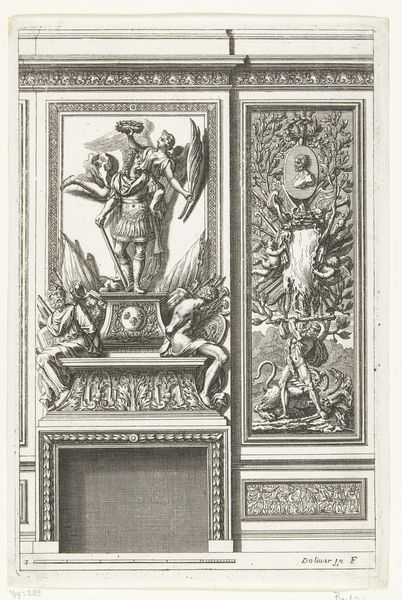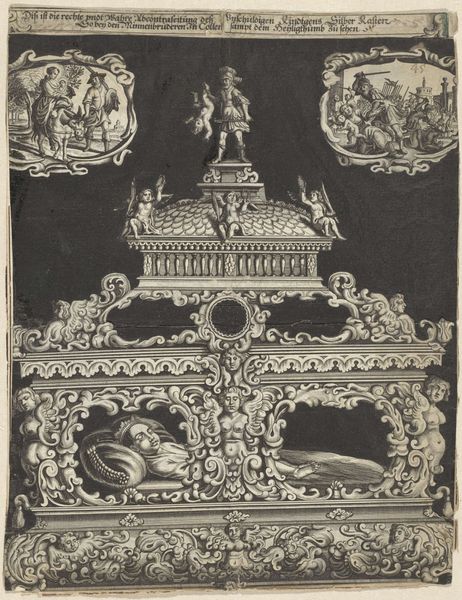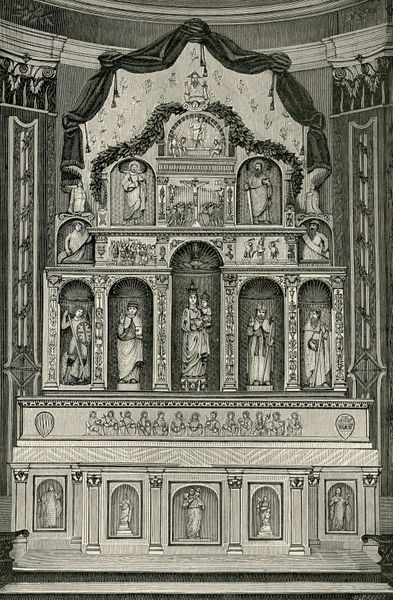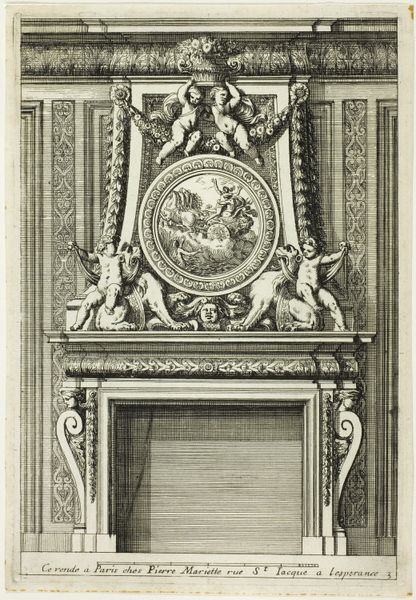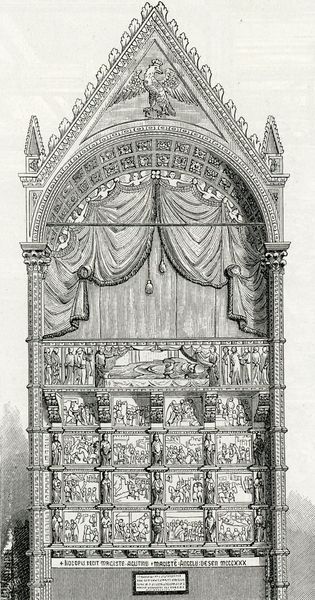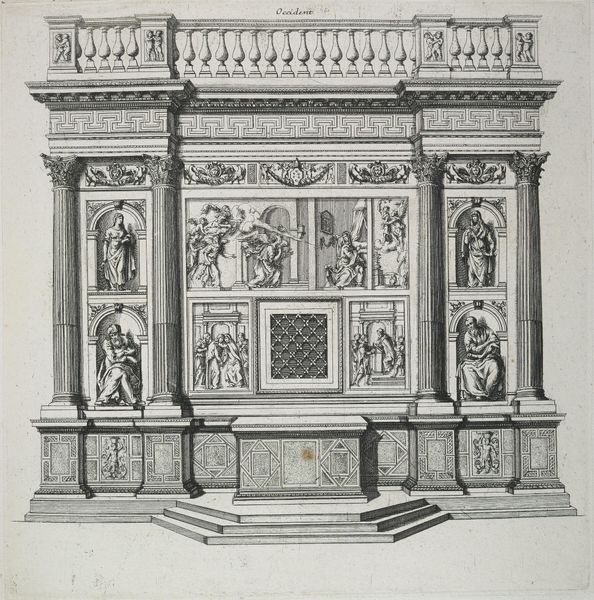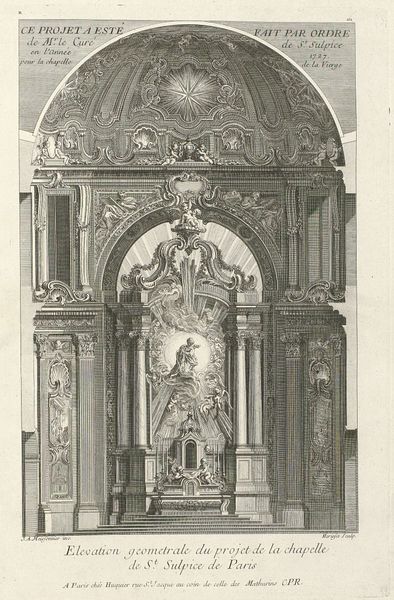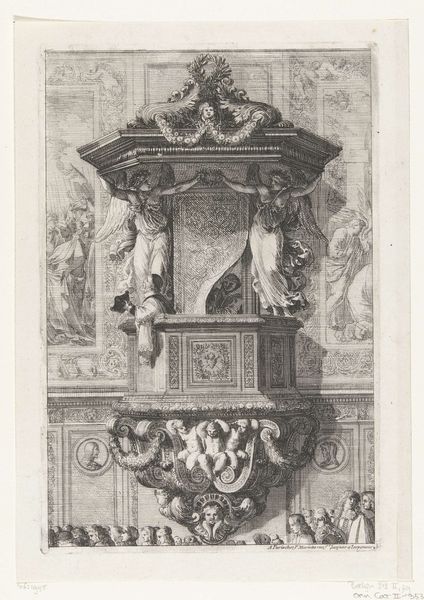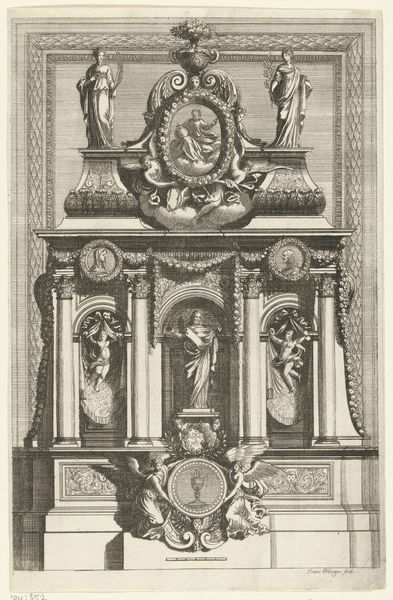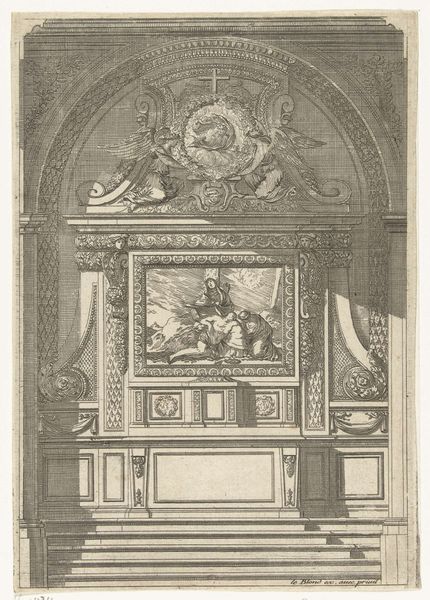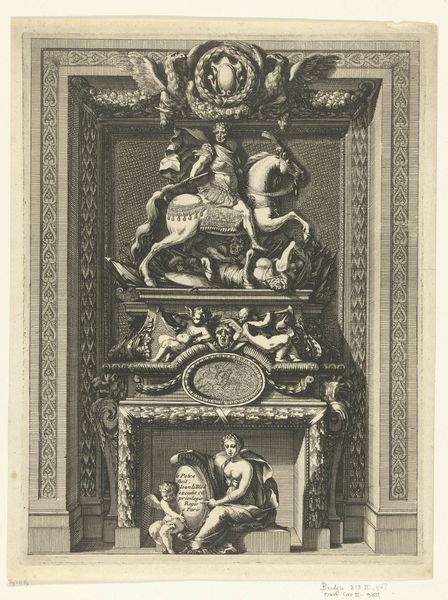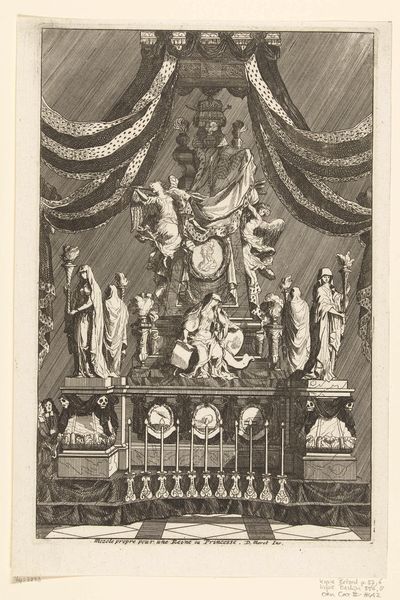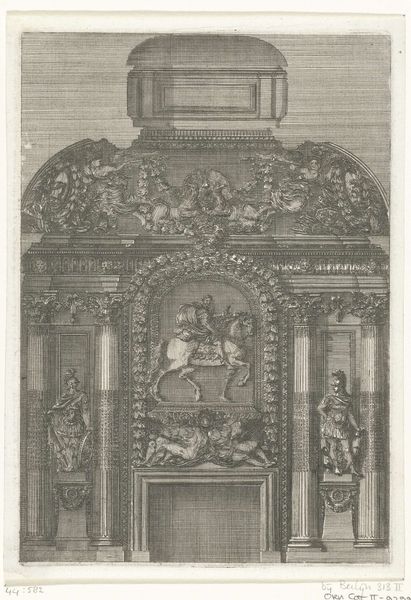
tempera, print, relief, sculpture, marble, engraving, architecture
#
medieval
#
tempera
# print
#
relief
#
11_renaissance
#
geometric
#
sculpture
#
history-painting
#
marble
#
italian-renaissance
#
engraving
#
architecture
Copyright: Public domain
Editor: Here we have Giuseppe Barberis’ print from 1898, depicting the Mausoleo Colleoni. I’m immediately struck by the almost overwhelming amount of detail, layer upon layer of figures and ornamentation. What are some of the formal elements that stand out to you in this work? Curator: Certainly. The engraving presents a fascinating study in Renaissance form. Observe how Barberis meticulously renders the architectural structure of the mausoleum. Note the arrangement of horizontal registers, each teeming with figures, effectively building a visual hierarchy. Do you perceive the geometric progression from the supporting columns to the equestrian statue at the apex? Editor: I see that now, especially how the equestrian statue seems to complete the triangular shape, giving it stability. But all the detail feels so busy. Curator: Indeed, the surface ornamentation is integral to its formal language. Consider how the texture, achieved through hatching and cross-hatching techniques, defines volume and space, especially on the relief panels. Note how Barberis manipulates light and shadow to accentuate the sculptural depth, creating a dynamic interplay across the entire façade. How does that structured chaos affect the overall impact? Editor: I suppose the detail isn't just decoration. It guides the eye upwards, highlighting each level before leading to the rider at the very top. I initially found it distracting, but the longer I look, the more it makes sense that the complexity has its own logic. Curator: Precisely. This logic stems from a deep understanding of Renaissance artistic principles, evident not just in the aesthetic choices, but also in the masterful employment of engraving to recreate the richness and dimensionality of marble sculpture and architecture. An interplay of representation, structure and artistry. Editor: Thanks, seeing the piece in terms of its structure instead of the history behind it really changes how I understand the whole artwork. Curator: Agreed; a closer look at formal and structural properties may alter perception as it invites new meaning.
Comments
No comments
Be the first to comment and join the conversation on the ultimate creative platform.

